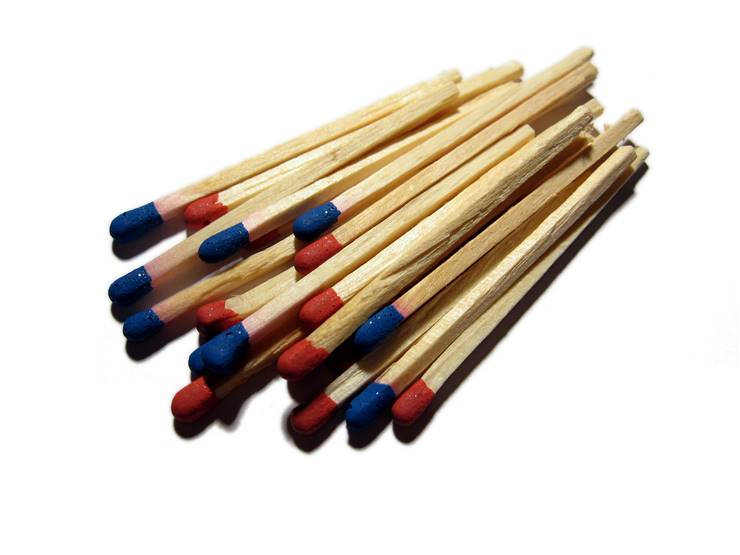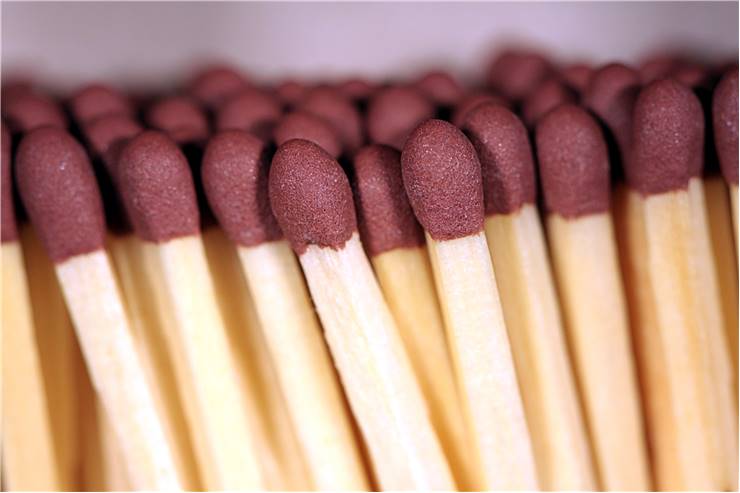History of Matches - Early and Modern Matches
The need to control fire enabled out ancestors to distinguish themselves from animals, and evolve into beings that could survive in hostile environments, shape the nature around them, prepare food from inedible natural sources and create a basis for modern human civilization that sparked its first light in ancient Mesopotamia. With almost two million years of fire present in our life, this source of power played key role in our evolution and survival. Around 1.9 million years ago evidence of first cooked found was found by archeologist, who theories that our ancestors gain control over fire somewhere around 1 million years ago. Evidence of widespread control of fire came from 50-100 thousand years ago, especially during Neolithic Revolution when wide expansion of grain-based agriculture forced humans to use fire as a tool in landscape management. However, creation of fire was never a fast and efficient, and because of that many inventors, chemists, scientists and engineers for ancient times tried to create a way to create fire at moment’s notice.
Some of the earliest examples of matches came from China, where chemist tried to use the energy potential of sulfur for easier creation of fire. They did not have the knowledge of interaction between friction and phosphorus compounds, and because of that, their matched cold not create fire by themselves. Instead of that, their sulfur coated wooden sticks of pinewood were used to catch the smallest amount of flame and expand it fast all around them. The first recorded mention of Chinese fire sticks comes from 577 AD, when they were used by Northern Qi court ladies to start fires during the military siege of Northern Zhou and Chen. During the time of Five Dynasties and Ten Kingdoms (AD 907–960), those fire sticks started being called "light-bringing slave" or “fire inch-stick”.

The first European experiments with phosphorus of sulfur matches started in second half of 17th century with the exploits of alchemist Hennig Brandt (discovered flammable nature of phosphorus), Robert Boyle and his assistant and Godfrey Haukweicz. The first modern self-igniting match was introduced to the public in 1805 by Jean Chancel who worked as an assistant of famous French chemist Louis Jacques Thénard. Head of this match was made from mixture of potassium chlorate, sulfur, sugar, rubber, and the user ignited the match by dipping it into small asbestos bottle filled with dangerous sulfuric acid. This dangerous and expensive mix of ingredients caused this match to never become successful. More than 40 years later in 1848, English cigar shop owner Hurtner introduced several brands of matches that were used for lighting cigars. The most famous matches in 19th century England were "Euperion" (sometimes "Empyrion"), Fizzes for lighting cigars and pipes, "Hugh Perry" which was widely used in kitchens all around England, and outdoor matches called “Vesuvian” and “Prometheans”. Both of them were equipped with enough chemicals to produce strong and long lasting fire that can start a wood fire even in windy or wet environment.
Friction matches were first introduced to the public in 1826 by John Walker, English chemist and druggist from Stockton-on-Tees. It was made by combining paste of sulfur with gum, potassium chlorate, sugar, antimony trisulfide, and ignited by drawing the match between the fold of sandpaper. Between 1827 and 1829, Walker managed to popularize his invention and sell 168 matches to public, but it soon found himself without a job because many though that his solution is too dangerous. Flaming ball of material often separated from the rest of the match, falling to the floor and destroying carpets and dresses. Because of that, his matches were quickly banned in France and Germany.
Matches evolved quickly from that point on. Sir Isaac Holden and Samuel Jones developed their own friction matches that were very explosive and smelly, but 1830s discovery of white phosphorus match by Frenchman Charles Sauria changed the landscape of matches and introduced many benefits and disadvantages - most notably ability to self-ignite and cause serious diseases. Public reaction to white phosphorus matches reached its peak during the first decade of 20th century where many countries banned production and sale of these dangerous objects.

Replacements for white phosphorus matches were safety matches that were devised Swede Gustaf Erik Pasch (1788–1862) and Johan Edvard Lundström (1815–1888). By utilizing red phosphorus only on the igniting surface, the matches itself were made perfectly safe for environment and health. By 1858 Lundström had industrial manufacturing capabilities to create 12 million match boxes per year, and form that point on their popularity rose until this match become the iconic object that is today used all around the world.

